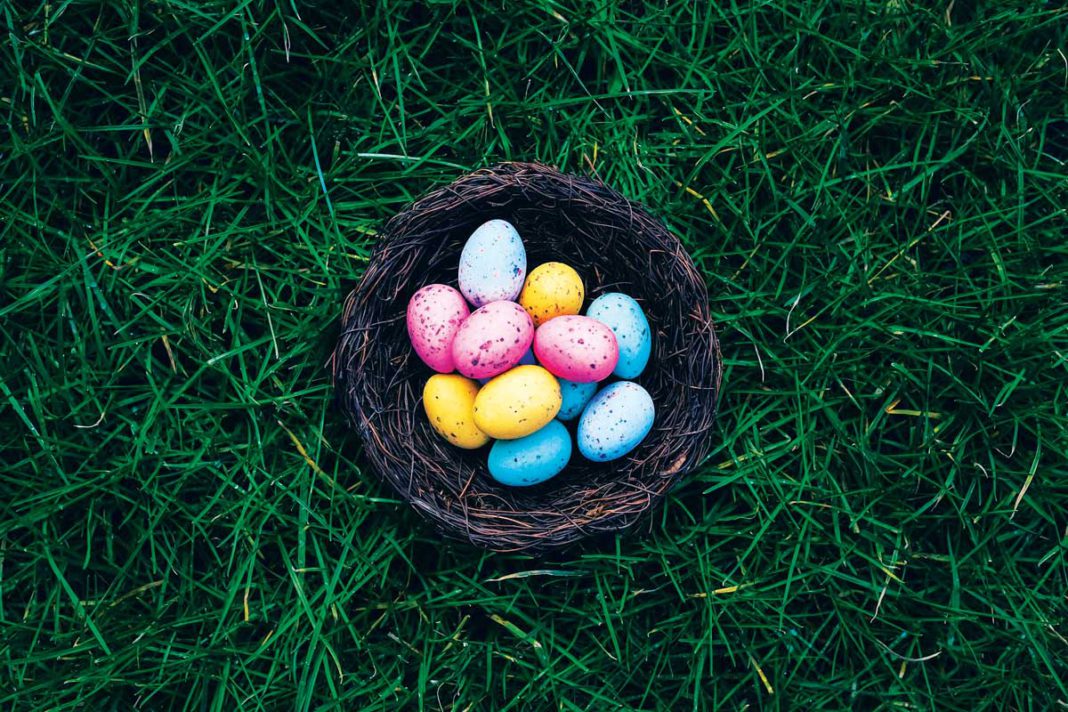Easter is right around the corner, and that means it’s time to pick up some eggs and decorate their shells in pretty shades of spring pastels.
But what if, instead of store bought food coloring or questionable dye kits from online, Marin locals could simply walk outside and find dyes just outside their door? Well, one may or may not be surprised to learn that some Marinites are already doing just that. And not just for eggs, but for woodcraft, dresses, scarves and scrunchies too.
One such expert on foraging local dye is Sarah Kleiner, founder and owner of her own natural dye company called Cybele. And though her specialty is cloth, Kleiner thinks the idea of getting kids out in nature and hunting for dyes is quite exciting. Keep in mind that not all natural dye ingredients are edible. So those who wish to experiment with inedible natural dyes can instead decorate wooden eggs that can be saved and used again each year.
“[Foraging for egg dyes] can make the Easter egg hunt a whole interactive process from start to finish, with a treasure hunt before and after,” said Kleiner. “You can go home, make the dye and have fun experimenting…”
Kleiner originally began foraging for medicinal herbs, but soon discovered that any foray can be a success if one simply widens their parameters and imagination. Now, she knows that hopi sunflower seeds dye purple, avocado skin and pits can turn pink and gold and that many mushrooms make for surprising and colorful dyes. Pine needles, redwood cones and eucalyptus boughs (especially those that fall after storms) are great sustainable dye sources as well, as are rosemary, olive leaves, marigolds and much more.
“There are a lot of great apps for plant identification,” Kleiner noted. “And a ton of invasive species that dye well, like sourgrass, which is all over the hills right now.”
“For other [non-invasive] plants, the forager’s general rule…is not to take more than about an eighth of the plant at a time,” she continued. “If an eighth of the plant is just a tiny crumb, then the plant is too small.”
Kleiner also suggests staying away from rare, unusual or otherwise uncommon plants and fungi to avoid disrupting the local landscape. Sustainability and symbiosis with nature and the environment are key aspects in any sort of foraging, Easter egg dye hunts included.
“If you don’t forage, you can always grow dyes from seed or start in your own garden,” Kleiner concluded. “It won’t turn around and be ready by tomorrow, but it’s still a great way to work with the land and feel more in sync with nature.”
When asked if the decorative flower and leaf pressing principles used in natural clothing dye projects can be applied to eggs, Kleiner laughed and said that people generally use hammers for that effect, which she would not suggest in Easter egg dyeing.
“But you can take a bigger dye pot and distill it all down into an almost paint or watercolor,” she added.
Pantry items also make for great natural dyes. One can use red onion skins for red dye, yellow onion skins for orange dye, turmeric for yellow dye, red cabbage for blue dye and, for green dye, just combine blue and yellow.
To extract the color from any of these ingredients, boil them in water until the hue strength is suitable. Then strain the liquid, add white vinegar, submerge some pre-boiled (preferably white) eggs in the mix and refrigerate it all together for an hour or two. For a deeper hue, remove the eggs, let them dry, then dip them again. When the eggs are all done and dyed, lightly polish them with a bit of oil to add some shine.









Awesome! I had a friend that use to dye wool using some of the same ingredients that you mentioned… and I like the 8th of a plant rule.